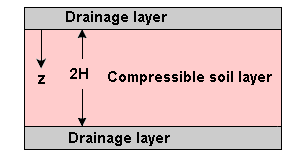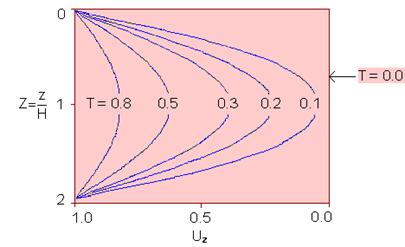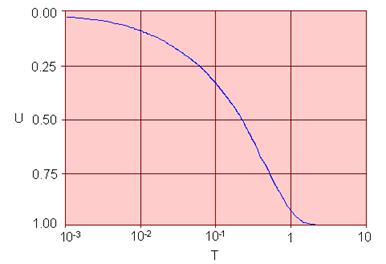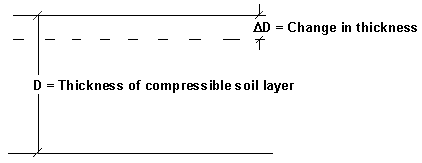During the consolidation process, the following are assumed to be constant:
1. The total additional stress on the compressible soil layer is assumed to remain constant.
2. The coefficient of volume compressibility (mV) of the soil is assumed to be constant.
3. The coefficient of permeability (k) for vertical flow is assumed to be constant.
There are three variables in the consolidation equation:
1. the depth of the soil element in the layer (z)
2. the excess pore water pressure (u)
3. the time elapsed since application of the loading (t)

To take care of these three variables, three non-dimensional parameters are provided:
1. Drainage path ratio, ![]() , where H = drainage path which is the longest path taken by the pore water to reach a permeable sub-surface layer above or below.
, where H = drainage path which is the longest path taken by the pore water to reach a permeable sub-surface layer above or below.
2. Consolidation ratio at depth z, Uz , which is the ratio of dissipated pore pressure to the initial excess pore pressure. This represents the stage of consolidation at a certain location in the compressible layer.
3. Time factor, ![]()
The graphical solution of Terzaghi's one-dimensional consolidation equation using the non-dimensional parameters is shown.

The figure is symmetrical about the horizontal line at ![]() = 1.
= 1.
For double drainage conditions, pore water above this location flows upwards whereas water below this location flows downwards. Thus, the horizontal line at Z = 1 is equivalent to an imperious boundary. For single drainage conditions, only either the top half or bottom half of the figure is to be used, and the drainage path is equal to the thickness of the compressible layer.
The above graphical solution shows how consolidation proceeds with time at different locations for a particular set of boundary conditions, but it does not describe how much consolidation occurs as a whole in the entire compressible layer.
The variation of total consolidation with time is most conveniently plotted in the form of the average degree of consolidation (U) for the entire stratum versus dimensionless time T, and this is illustrated below.

There are useful approximations relating the degree of consolidation and the time factor, viz:
For U £ 0.60, T = ( p /4).U2
For U > 0.60, T = 1.781 – 0.933 log10(100 - U%)
Consolidation Settlement and Time
To estimate the amount of consolidation which would occur and the time it would take to occur, it is necessary to know:
- The boundary and drainage conditions
- The loading conditions
- The relevant parameters of the soil, including initial void ratio, coefficient of compressibility,
coefficient of volume compressibility
, compression index, and coefficient of consolidation. They are obtained from consolidation tests on representative undisturbed samples of the compressible soil stratum.

Comparing the compressible soil layer with a soil element of this layer,
![]()
![]()
![]()
De can be expressed in terms of av or Cc.
![]()
or
![]()
The magnitude of consolidation settlement is
![]()
or
